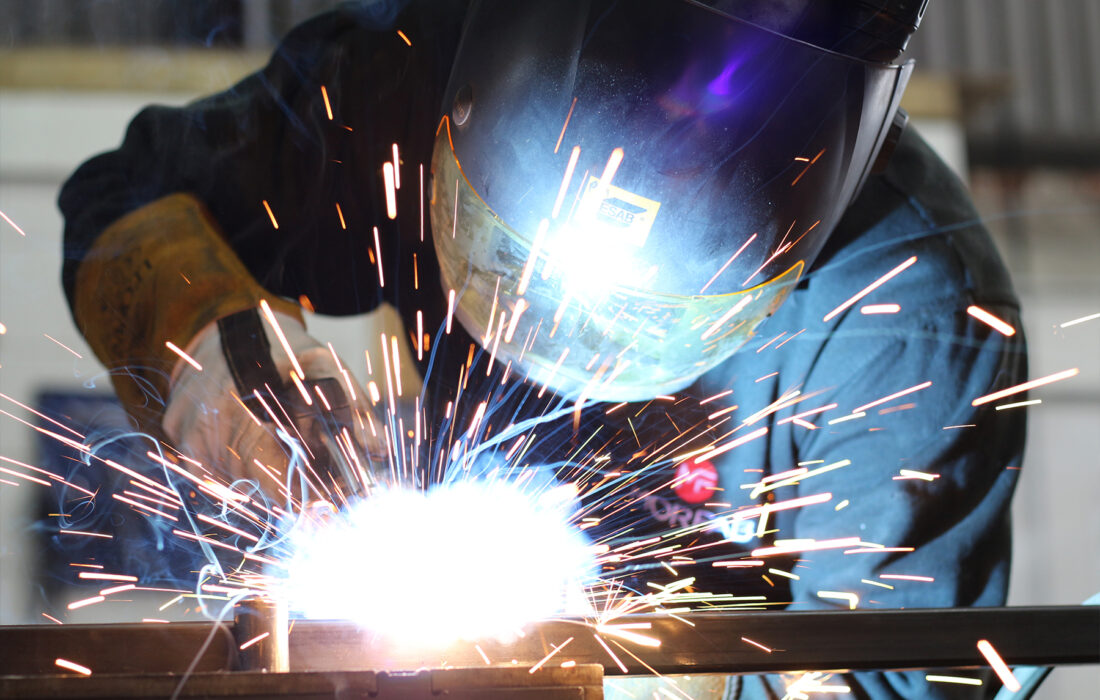Cutting-edge Fads in Steel Fabrication: Enhancing Sturdiness and Precision
In the world of steel fabrication, the pursuit of sturdiness and precision has led to a wave of innovative fads that are improving the market. These fads are not simply shaping the present but likewise laying the foundation for the future of steel manufacture, promising additional enhancements in toughness and accuracy.
Advanced Welding Technologies
In the realm of steel construction, the fostering of sophisticated welding innovations has actually considerably transformed the industry's technique to achieving superior quality and accuracy in architectural welds. Advanced welding modern technologies, such as laser beam of light welding and rubbing stir welding, have actually emerged as game-changers in the field. By leveraging these sophisticated welding methods, steel fabricators can boost the durability, strength, and precision of their structural welds, meeting the significantly demanding requirements of contemporary construction jobs.
Robot Automation in Manufacture
Welcoming robot automation has actually come to be a keystone of modern steel manufacture methods, improving and improving processes performance throughout the sector. Robotics are changing the means steel elements are made, providing unequaled accuracy and rate while decreasing human mistake. These automated systems can take care of repeated tasks with constant accuracy, bring about better end products.
One trick advantage of robot automation in steel construction is the capacity to function around the clock without tiredness, dramatically increasing production output. This constant operation minimizes downtime and accelerates task timelines, ultimately saving costs for producers. Additionally, robotics can be configured to perform elaborate tasks that may be hazardous or tough for human employees, enhancing security in the workplace.
Furthermore, robot automation makes it possible for seamless integration with other electronic modern technologies, such as computer-aided design (CAD) software program and Internet of Things (IoT) systems (Alpha reo). This interconnected method boosts interaction between different stages of construction, maximizing workflows and guaranteeing real-time surveillance and control. As the steel manufacture industry continues to develop, robot automation attracts attention as a transformative pressure driving efficiency and precision in manufacturing processes

High-Strength Alloy Development
The development of high-strength alloy advancement in steel construction is reshaping the industry's method to enhancing material sturdiness and performance. High-strength alloys are engineered to exhibit exceptional mechanical homes, such as boosted tensile stamina, strength, and rust resistance compared to conventional steel qualities. By including these advanced alloys into manufacture procedures, suppliers can generate elements that stand up to higher stress degrees and rough atmospheres, resulting in more sturdy and reputable end items.
One secret benefit of high-strength alloy growth is the capability to decrease product thickness without compromising architectural stability. This not only leads to lighter-weight components yet likewise adds to set you back savings and boosted effectiveness in manufacture and setting up processes. The improved strength-to-weight proportion of these alloys allows for the layout and construction of frameworks with higher load-bearing capabilities while decreasing general weight.
3D Modeling and Simulation Software Program
Developments in steel manufacture processes have actually been significantly driven by the integration of innovative 3D modeling and simulation software program tools. These tools enable makers to create my sources in-depth virtual models of their jobs, allowing them to visualize the end product with accuracy before any type of physical job starts. By simulating different stress and anxiety factors, environmental conditions, and architectural lots, fabricators can optimize layouts for improved toughness and efficiency. In addition, 3D modeling and simulation software application simplify the production process by determining prospective concerns beforehand, reducing the need for costly rework and reducing material waste.

Lasting Practices in Steel Production
Integrating sustainable methods right into steel production procedures is important for decreasing environmental influence and guaranteeing long-term source availability. One essential sustainable practice is the adoption of energy-efficient technologies to lower greenhouse gas exhausts during the steel manufacturing procedure. This includes using renewable power sources, such as solar or wind power, to power steel plants and executing energy-efficient equipment to optimize energy usage.
An additional essential aspect of lasting steel production is the liable sourcing of resources. This involves making sure that the iron ore and various other resources used in steelmaking are acquired from ecologically friendly and honest resources. By advertising have a peek at this site openness in the supply chain and adhering to strict environmental requirements, steel makers can decrease the adverse impacts of resource extraction on local communities and neighborhoods.

Conclusion
In conclusion, the cutting-edge patterns in steel construction such as advanced welding modern technologies, robot automation, high-strength alloy development, 3D modeling and simulation software, and lasting methods are improving the resilience and precision of steel items. These innovations are reinventing the steel fabrication sector by enhancing sustainability, quality, and performance. It is clear that the future of steel construction depends on accepting these cutting-edge modern technologies to fulfill the demands of modern-day building and production industries.
In the realm of steel click resources construction, the pursuit of durability and precision has actually led to a wave of innovative patterns that are improving the industry.In the realm of steel manufacture, the adoption of innovative welding technologies has dramatically transformed the market's strategy to achieving remarkable top quality and precision in structural welds. As the steel manufacture sector continues to develop, robot automation stands out as a transformative pressure driving efficiency and precision in producing procedures.
In addition, reusing and reusing steel scrap and waste products play a substantial role in enhancing the sustainability of steel production. Alpha reo.In conclusion, the ingenious patterns in steel construction such as innovative welding modern technologies, robot automation, high-strength alloy development, 3D modeling and simulation software, and sustainable practices are enhancing the sturdiness and precision of steel products